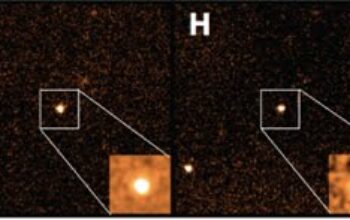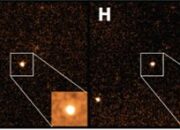As we delve into the realm of computational technology, a pressing question arises: how powerful are quantum computers when juxtaposed with classical binary computers? This inquiry transcends mere curiosity; it holds implications for the future of technology, cryptography, artificial intelligence, and numerous fields yet to be fully realized. This article navigates the intricate landscape of computation, illuminating the fundamental distinctions and potential of these two paradigms.
At its core, classical computing relies on binary digits, or bits, that represent a state of either 0 or 1. This binary system forms the foundational architecture of classical computers. Every computational task—no matter how complex—can ultimately be reduced to a series of binary operations. Classical computing thrives in domains where processes can be meticulously broken down and executed in sequence. The archetypical example includes mathematical computations and data processing tasks, wherein formidable processing power has been achieved through advanced microprocessor design.
In stark contrast, quantum computing introduces a radically different concept based on the principles of quantum mechanics. The fundamental unit of quantum information is the quantum bit, or qubit. Unlike the binary bit that exists in a definite state, a qubit can inhabit multiple states simultaneously, thanks to phenomena known as superposition and entanglement. Superposition allows qubits to perform numerous calculations at once, exponentially increasing computational power. Entanglement, on the other hand, facilitates instantaneous correlations between qubits, regardless of distance, thereby enabling complex problem-solving capabilities unattainable by classical architectures.
The potential applications of quantum computing are vast and varied, beckoning exploration into realms such as optimization, material science, and drug discovery. A salient example lies in factoring large integers, a task routinely performed in cryptography. Classical computers rely on algorithms that require polynomial time to crack encryption keys. Quantum computers, powered by Shor’s algorithm, can theoretically accomplish this feat in polynomial time, rendering contemporary cryptographic methods vulnerable. Such a capability has significant ramifications for data security and privacy standards worldwide.
Furthermore, the field of machine learning stands to benefit enormously from quantum algorithms. Classical machine learning necessitates processing vast amounts of data through intricate neural networks, often constrained by processing speed. Quantum computing promises to revolutionize this paradigm; quantum algorithms can potentially analyze data sets at an unprecedented speed, enabling faster training of models and more sophisticated data analyses. As such, industries could see advances in sectors ranging from finance to healthcare, where pattern recognition and predictive analytics are paramount.
Despite the advanced capabilities of quantum computing, it would be misleading to proclaim it unequivocally superior to classical computing. Certain tasks, particularly those structured around straightforward operations and requiring reliability, remain the forte of classical systems. Quantum computers are inherently stochastic; they produce probabilistic outputs that necessitate refinement through multiple iterations. Thus, while quantum computers may excel in specific, resource-intensive domains, classical computers maintain their edge in everyday computational tasks.
The current landscape of quantum computing is characterized by various technologies and approaches, each contributing to the quest for a practical quantum computer. Superconducting qubits, trapped ions, and topological qubits manifest distinct strengths and weaknesses. Superconducting qubits, famously developed by entities like IBM and Google, utilize superconducting circuits and are now among the most researched types. Trapped ion systems, which employ ions suspended in magnetic fields, exhibit long coherence times, thereby fostering greater stability for computations. Conversely, topological qubits, still largely experimental, hold potential promise due to their inherent resistance to errors, potentially mitigating the challenges faced by other technologies.
Moreover, as we scrutinize the progress in quantum technology, it is crucial to acknowledge the substantial barriers that remain. Quantum coherence—a state in which qubits maintain their quantum properties—can be disrupted by environmental interference, leading to decoherence. This vulnerability necessitates sophisticated error correction codes and hardware improvements to instantiate resilient quantum systems. The journey from theoretical potential to practical quantum applications is fraught with challenges, yet the trajectory is promising.
It is also essential to consider the sociopolitical ramifications of a quantum computing revolution. As quantum capabilities evolve, existing frameworks for privacy and security will require reevaluation. Policymakers and technologists must collaboratively forge new standards that address the unique challenges posed by quantum advancements. The prospect of a “quantum internet” beckons, envisioning a world where quantum entanglement enables instantaneous communication across vast distances, potentially redefining both connectivity and data security.
The dialectic of quantum versus classical computing is neither superficial nor conclusive, but rather a complex interplay of capabilities, limitations, and evolving technologies. As quantum computers inch closer to realizing their revolutionary potential, the classical systems that have served society so faithfully will continue to play a critical role. The synthesis of these two paradigms—the enhancement of classical computing through quantum algorithms and the integration of classical reliability with quantum speed—promises a multifaceted computational future where synergy, rather than disparity, underpins technological advancement.
In conclusion, the inquiry into the power dynamics between quantum computers and classical binary computers reveals a profound and nuanced landscape. Each computational paradigm possesses unique attributes, serving distinct functions within the broader matrix of technological evolution. As we unlock the mysteries of quantum mechanics and refine our classical systems, a new frontier of possibilities emerges, poised to redefine the fabric of computing itself.









